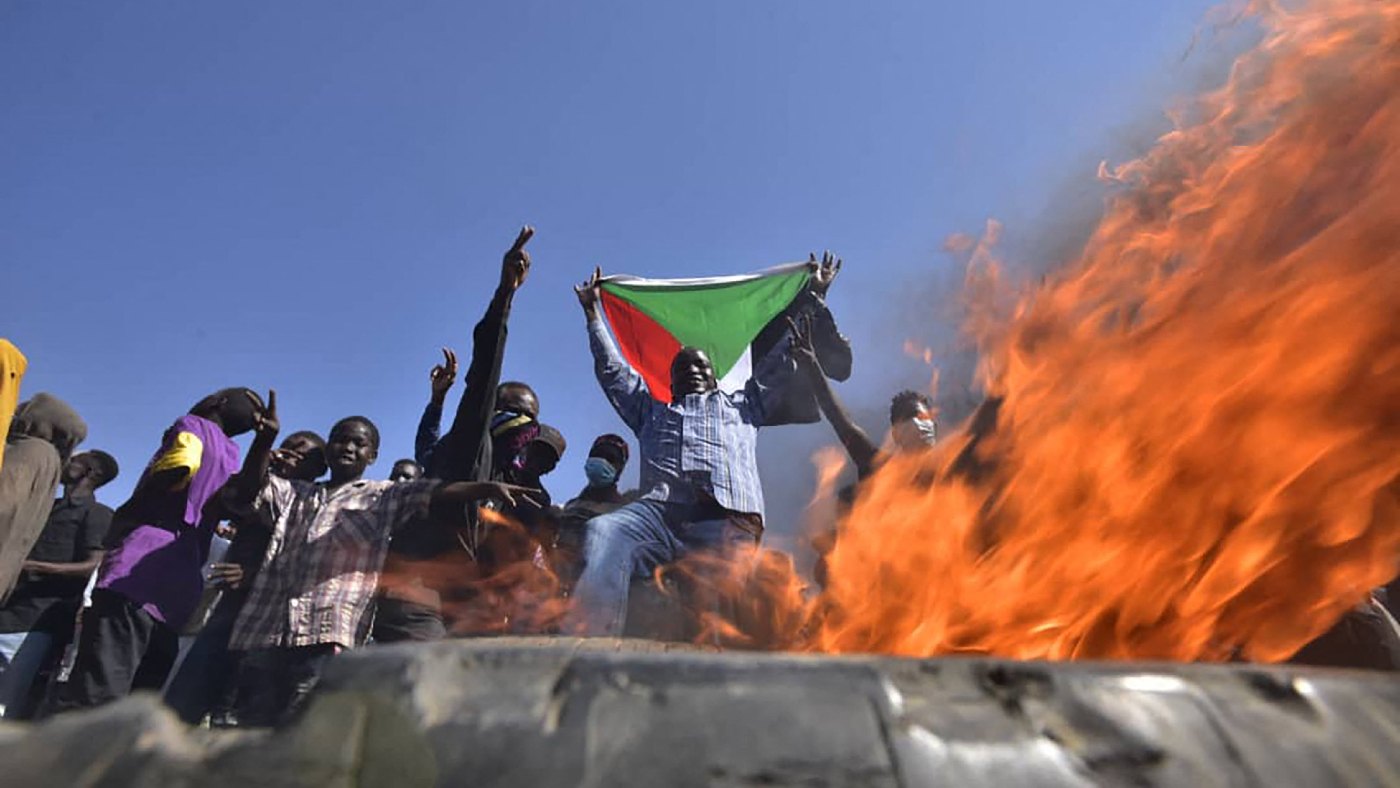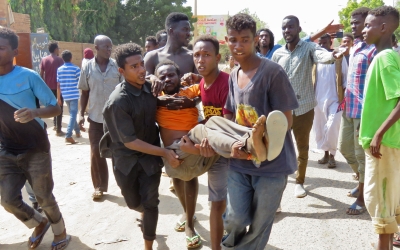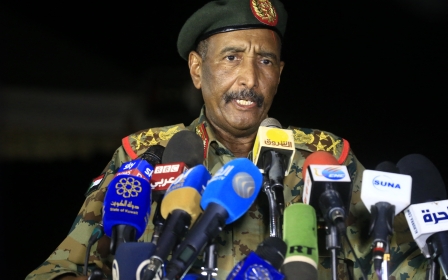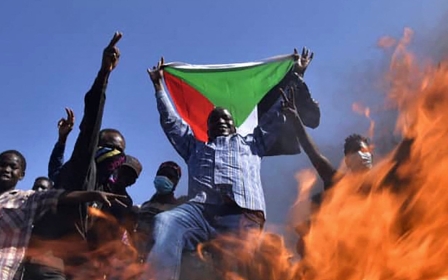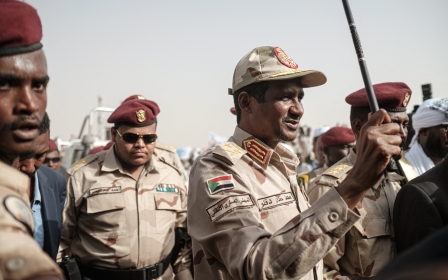The Sudanese doctors running secret clinics for the revolution
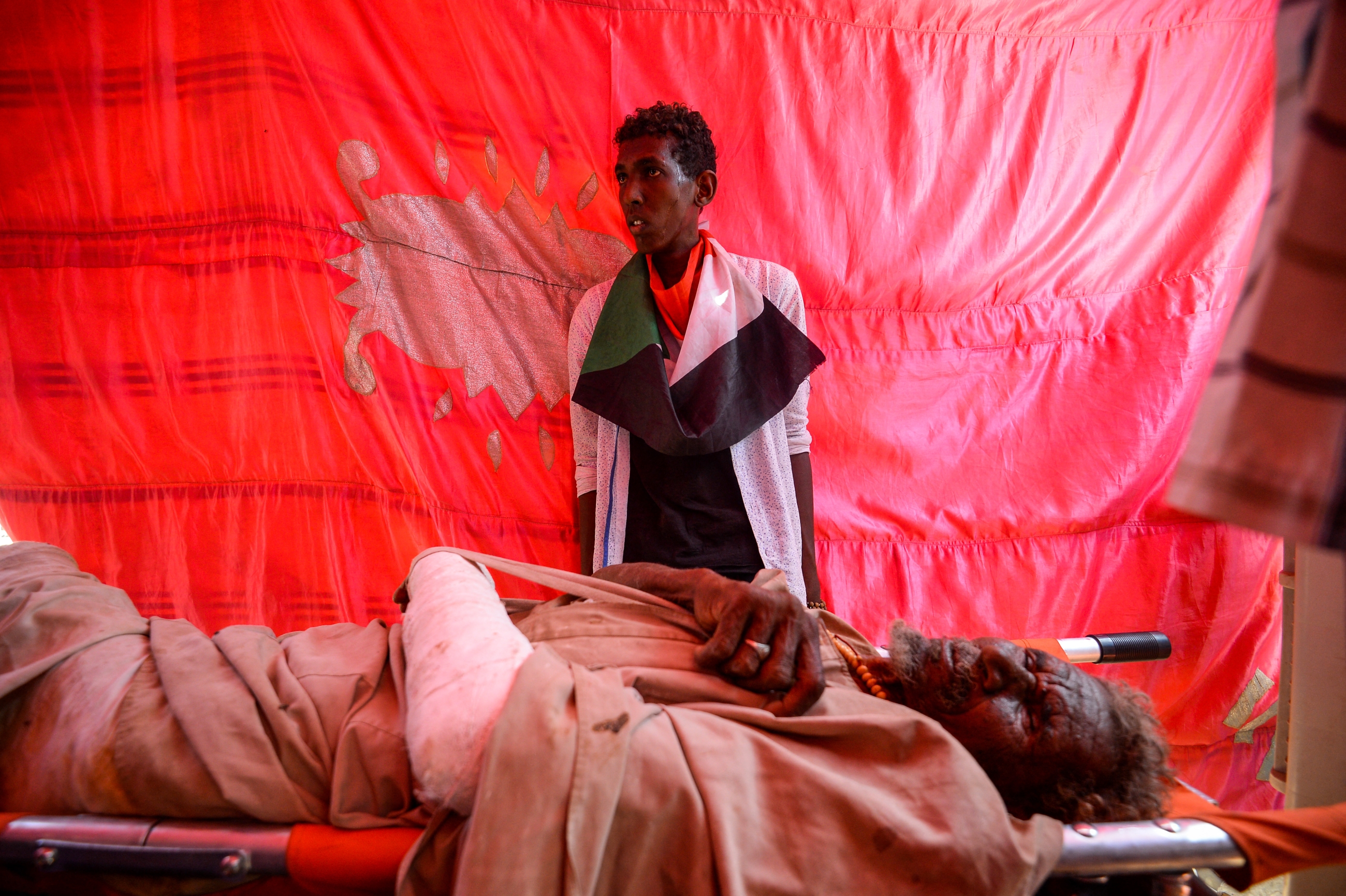
It was 30 November, and protests against the military coup in Sudan were taking place across the country.
Mohamed Abbas was out on the streets in Omdurman, the twin city of the capital Khartoum. Protesting in the al-Abbasiya neighbourhood, the young man was shot with live ammunition by security forces.
Abbas, who is in his thirties, needed urgent medical attention because his leg was badly injured. But with protesters often prevented from reaching hospitals by the police or Rapid Support Forces (RSF) militia, and ambulances deliberately blocked off, the wounded protester needed more immediate care.
And so fellow demonstrators took him to a nearby safe house that acts as a medical clinic.
The clinic is secured by resistance committee members and run by doctors belonging to the Central Committee of Sudanese Doctors (CCSD), a professional organisation akin to a union that has been working closely with the resistance committees ever since Sudan’s revolution sprang into life in 2019.
New MEE newsletter: Jerusalem Dispatch
Sign up to get the latest insights and analysis on Israel-Palestine, alongside Turkey Unpacked and other MEE newsletters
Inside the safe house clinic, doctors treated Abbas’s injuries. Like other patients injured by the police or armed forces, he was urgently treated at the clinic before being rushed off by motorbike to the nearest hospital.
Motorbikes are used by resistance committee members because they are able to take covert routes down local side streets, reaching nearby hospitals without revealing the location of safe houses or being stopped by armed forces on the way.
The undercover doctors
These doctor-run field clinics are a vital part of the pro-democracy movement resisting Sudanese military forces.
Keeping their location secret is vital work for the protesters, who look to draw the attention of the military away from the houses that host them.
In neighbourhoods like Omdurman’s al-Abbasiya, which has hosted a number of face-offs between civil society and the military, safe house clinics have sprung up to take care of injured protesters, but they have been vital in Khartoum.
“The idea of the clinical field site came in January 2019 in Burri [a Khartoum neighbourhood], which was a flashpoint at the time, especially when the authorities began preventing protesters from evacuating their injured, obstructing the movement of ambulances and sometimes blockading or raiding hospitals,” Ahmed Mahmoud, a resistance committee member, told MEE.
Mwafag Abdul Majid, a doctor and resistance committee member, said that the CCSD - one of the most active doctors’ groups - and resistance committees are working closely together across a number of districts to coordinate the provision of first aid to protesters injured on the streets.
This coordination, he added, was necessary to fill the gap created by the authorities' sabotage, be that the denial of access for ambulances or the ban on evacuating the injured during clashes between security forces and demonstrators.
As a creative response to these restrictions, the covert field clinics have come into their own, particularly since the 25 October military coup.
Operating them is fraught with danger, though, and has been since the early days of the revolution.
In January 2019, before longtime ruler Omar al-Bashir was removed from power, Babikir Abdul Hamid, a doctor, was shot dead by security forces inside one of the clinics established to save the lives of injured protesters in Burri.
Bashir was later charged with the killing of the doctor by the Sudanese attorney general.
A revolutionary role
Established in 2010 and then reorganised in 2013, CCSD was widely expanded after the beginning of the December 2018 revolution, working closely with the resistance committees.
'CCSD has been working in the shadows and has secretly expanded its network on the ground as well as in the hospitals'
- Leading SPA member
The group now provides other emergency assistance, including blood transfusions.
One committee member told MEE that the doctors “meet a wide range of medical needs for protesters, and they have been arrested or beaten by the police and security organs while they do this emergency work”.
The member, who spoke on the condition of anonymity, said doctors had also “trained more than 100 resistance committee members in first aid, in order to help save lives and assist doctors in their work”.
All this is being done with very little money, equipment, medicine and other materials.
At the same time, the CCSD has become a well-known and credible source of information for local and international media, providing reliable casualty and death toll figures since 2019.
A leading member of the Sudanese Professionals Association (SPA) told MEE that doctors are under constant surveillance from the security services, a fact of life that has pushed their work further underground.
“Like the experience of the SPA, which it was part of, CCSD has been working in the shadows and has secretly expanded its network on the ground as well as in the hospitals with the other groups of doctors and resistance committees, using different tactics to remain effective without being arrested by the security organs,” the leading SPA member said.
Different doctors serve as members of the CCSD's executive office, one leading member said, with the office developed underground because of security issues during the Bashir era.
During the sit-in by protesters in 2019, new members were added to the executive office in order to bring different insights and ideas about the political situation.
"The CCSD consists of different offices," the group's leading member said. "Each office has it is own task and its own autonomy, sometimes making decisions without going back to head office, depending on the security and communication situation. Sometimes there is no way of contacting people in the field," she said.
Targeted for arrest
As claimed by medical sources and civilian eyewitnesses, the use of live ammunition and other forms of violence against protesters - including the blocking of ambulances, storming of hospitals and beating of doctors - has snowballed into a campaign of arrest aimed at doctors documenting and monitoring the situation in Sudan.
Sources in the resistance committees and CCSD told MEE that the security services are targeting them for arrest, thus pushing them further underground.
The doctors' field teams are divided up across Khartoum and its twin cities, with one of the leading members who spoke to MEE saying that "most of the time these teams don't know each other. Only one person knows them all and that is the person who gives instructions and who the teams trust".
During the sit-in outside army headquarters from April to June 2019, CCSD members became better known but still kept a low profile due to the instability of the nascent civilian-led government.
After the 25 October coup led by General Abdel Fattah al-Burhan, the doctors' teams reorganised and started to work undercover in coordination with the resistance committees.
For their part, Sudanese authorities, including the police and army generals, have strongly denounced the monitoring conducted by the CCSD.
In their most recent statements, the doctors' group reported that there have been more than 300 people injured or killed across the country since the 25 October coup.
More than 250 people have been killed in Darfur, the CCSD said, while at least 45 have been killed in Khartoum.
Middle East Eye delivers independent and unrivalled coverage and analysis of the Middle East, North Africa and beyond. To learn more about republishing this content and the associated fees, please fill out this form. More about MEE can be found here.


